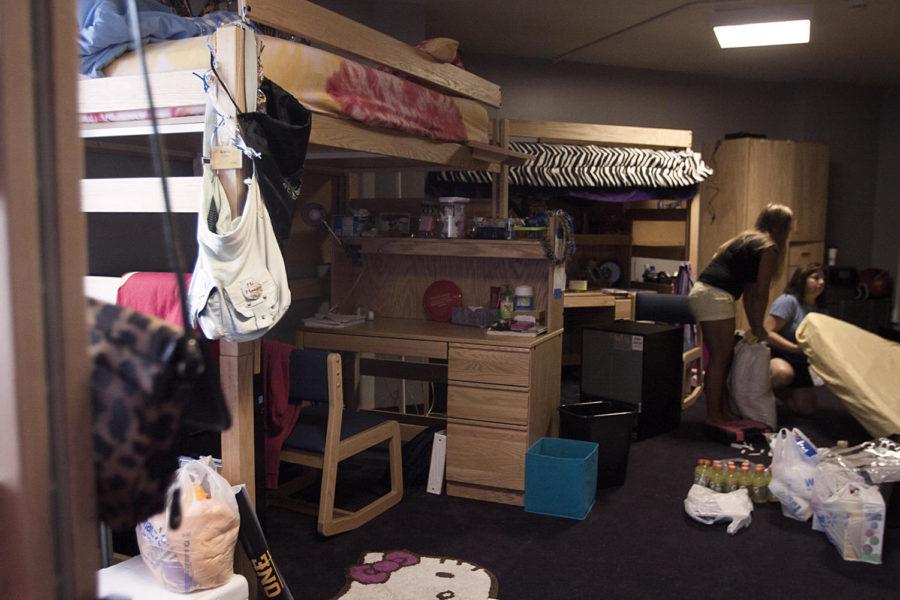Cummings: Work together to fix housing problem
With many students now looking to secure a place in Ames for the next school year, the matter of housing expansion needs to be quickly addressed.
March 6, 2014
The deadline for canceling housing contracts without an 80 percent penalty is now two days behind us, and the students who managed to make that deadline are letting out sighs of relief. However, it is the issue behind this strict penalty that might make students cringe: insufficient housing. And with many students now looking to secure a place in Ames for the next school year, the matter of housing expansion needs to be quickly addressed.
In last week’s reminder to students to cancel their housing contracts by the deadline, Director of the Department of Residence Peter Englin stressed the importance of students making their housing decisions quickly. If students who are not serious about living on campus another year do not decide to cancel their contracts until after the deadline is already up, students who want to live on campus have a more difficult time finding the space.
But lack of space seems to be a growing issue as Iowa State’s enrollment and the population of the Ames community continues to increase. This past fall marked the highest enrollment in ISU history, as student numbers climbed to 33,241 — a seven percent increase since fall 2012. Not only that, but last year also saw the highest number of total new freshmen enrollment to date — 6,089 to last year’s 5,366. With all this record breaking enrollment, Iowa State struggles to keep up.
The university has, however, made some efforts to make sure everyone who wants to live on campus is able. Back in the fall of 2012, the Board of Regents approved an expansion of Frederiksen Court, adding an additional six apartment buildings to accommodate increased student demand. Although this did help to give students more on-campus housing options, it still was not enough to meet the needs of enrollment.
Other solutions like turning residence hall dens into dorm rooms and offering some students $1,000 to vacate their dorms in favor of freshmen only worked for a short while. This school year, Iowa State decided to lease bedrooms in the previously non-campus apartment buildings Maricopa and Legacy. These buildings will continue to be leased for the 2014-2015 academic year, and will include some additional rooms in Maricopa-Walton. However, Iowa State’s lease on these buildings pushed out around 200 students who already had leases for these buildings.
The question is, as ISU enrollment is likely to continue its growth, how will the university meet the housing demands? There only seem to be three options: build new campus housing options, lease other Ames apartment buildings or turn down students once housing has reached its capacity.
Because it is highly unlikely the university would turn away college hopefuls, Iowa State must instead look to the first two options. However, both options would mean moving other Ames residents out of their homes. As proven by Maricopa and Legacy, leasing existing apartment buildings simply favors ISU students and displaces other Ames residents. And with limited space around campus to build new dorms, Iowa State would need to look farther — ultimately extinguishing that “on campus” feeling.
This is why the city of Ames must step in to help. With Iowa State’s population making up about half of the total population of Ames, ISU students do more than their share to keep the Ames economy bustling. In order to meet the demands of Iowa State’s high enrollment and to equally meet the demands of non-student residents looking for places to live, Iowa State and the city of Ames must work together to create adequate housing.
With both populations constantly growing, it may be time for Ames to expand. Creating additional housing spaces — whether they be apartments, condominiums, duplexes or houses — would significantly help to house both city residents and ISU students. Likewise, Iowa State would then be able to rent out existing apartment buildings near campus without the fear of displacing non-student residents. Then, the traditional dorms could be left for incoming freshmen (as seems to be the preference), and upperclassmen would have the choice to live on campus in university apartments.
Though no solution is going to come without significant cost to Iowa State or to the city of Ames, it is important that we seek to find a proper solution to the housing problem now before students are turned away not by the university, but by the lack of “campus community” on which the university so prides itself.

















